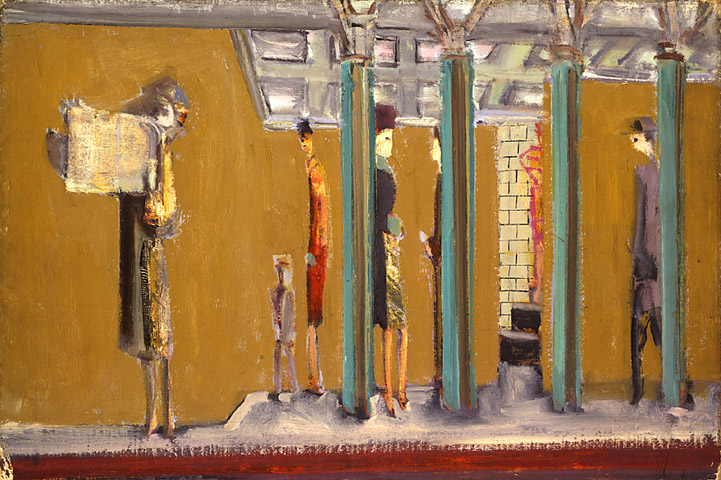Fr : version française / En: english version
mheu, Historical Museum of the Urban Environment
Untitled (subway)
Mark Rothko

Date : 1937
Technique : oil on canvas
Size : 86 x 61 cm
Location : National Gallery of Art, Washington DC
Photo credit : © Christopher Rothko and Kate Rothko Prizel
View this work in the Urban transportation exhibition
The work
In the late 1930s, Rothko completed a series of paintings on the theme of the subway, or more precisely, the subway platforms, showing passengers waiting. It enabled him to focus on the horizontals and verticals, treating the figures as tall, spindly, stick-like forms. They are flat, stiff and inexpressive and yet suggestive of an inaccessible inner drama. Yet his palette already shows a deep exploration of color accompanied by an already perceptible refusal to subscribe to the illusion of perspective: "We are for flat forms because they destroy illusion and reveal truth."
The artist
A painter closely identified with the New York School, Mark Rothko was born in Dvinsk in the Russian Empire (now Daugavpils, Latvia). His father was a pharmacist. The family emigrated to Portland, Oregon in the United States in 1913. A brilliant scholar, Rothko was admitted to Yale where he planned to become an engineer or a lawyer. Instead he abandoned his studies in 1923 and settled in New York where he studied painting with Max Weber and taught drawing to young people. His first paintings, in the 1930s, were urban scenes, portraits and interiors influenced by Expressionism. Rothko then drew his inspiration from Surrealism and biblical themes. It was not until the late 1940s that he started to detach himself from the subject ("It is a widely accepted notion among painters that it does not matter what one paints as long as it is well painted. This is the essence of academicism. There is no such thing as good painting about nothing.") and found the form that was to make him famous: large rectangular areas of color with fuzzy edges that seem to vibrate against the background due to subtle contrasts. Public commissions started to pour in from the 1960s onwards. In 1968, Rothko was diagnosed with an aortic aneurysm which weakened him and prevented him from working on large formats. He committed suicide in 1970. Since then his popularity has continued to rise and Rothko is now among the ten most expensive painters in the world.